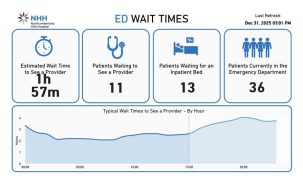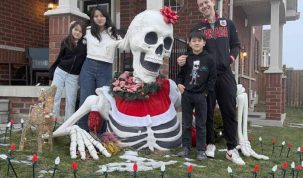Editorial – Something is wrong with the system and needs to be fixed.
Two very different press releases came out in the last 24-hours by the provinces Special Investigations Unit. Both highlight strong questions concerning what is wrong in the province.
Highlighting the tragedies is much easier than solving the problems.
The first release came out on June 18, 2018 dealing with the Port Hope Police Service.
In essence the SIU is investigating after a 48-year-old Port Hope man died had shortly before midnight on June 17, 2018.
As with most serious calls, Port Hope Police would have been called to the scene along with Port Hope Fire Department and Northumberland County Paramedics.
But because when police officers arrived they started CPR on the man, then administered naloxone (a medication used to block the effects of opioids). Naloxone has saved countless lives – unfortunately, not all lives can be saved, and tragically in this case, the man died after being transferred to hospital.
Two SIU investigators have been assigned along with one forensic investigator.
New regulations come into effect on June 30 saying the SIU will not investigate death or injury involving cases of naloxone.
Among the reasons why the director will not investigate under the Ontario Special Investigations Act is if the officer did not cause or contribute to the need for immediate medical care and the need for immediate medical care did not arise due to an accident, a vehicle crash or police chase.
None of these seem to have taken place in the response by police on June 17. Yet still, the SIU investigates. The investigation will most likely be a short one, yet still, it’s safe to say with three investigators assigned, thousands of needless taxpayers dollars will be spent just 13 days before the regulations come into effect.
Combined with the toll it takes on police officers having to wait and come under scrutiny each time something like this arises.
There were nearly 4,000 opioid deaths in Canada last year.
The second release was issued on June 19, 2018 by the SIU dealing with the death of a 24-year-old woman who took her own life in front of police officers in Cobourg in May 24, 2017.
Reading the report by the SIU it says the woman sought help only two days before.
“Information received from family and friends of the Complainant revealed that she had been upset and depressed in the days leading up to May 24th, 2017, and she was seeking assistance from hospital and various churches, following which she attended the CPS to speak with the Chaplain,” states the report.
The woman was visibly upset and the officer took her into a comfortable interview room and spoke to her for a “considerable length of time.”
She advised the officer that she had thoughts of suicide but had not done it because she didn’t want her family to deal with the “mess” the previous weekend.
The woman refused the officer’s offer to take her to the hospital to speak to a crisis worker, stating she had already attended three churches before coming to the police station.
The officer felt in the best interest to apprehend the woman under the Mental Health Act for her own safety.
But this is where the report almost screams out for a coroner’s inquest. Upon taking the woman to hospital for a psychiatric evaluation, “the doctor saw the Complainant for four minutes, after which he advised that she was not suicidal and she was free to go,” states the report.
The officer then drove her back to the police station and the woman was put in touch with the police chaplain. But the woman must have had the trust of the officer because only a day later she contacted Cobourg Police stating she was feeling “down.”
The same officer again met the woman for another conversation in a recorded interview.
During the interview the report states the woman did not repeat her intention of self-harm.
Given she went to police and had the trust of the officer, it may have been a last cry for help.
On the morning of May 24 at 9:47 a.m. the woman once again called Cobourg Police and stated her intentions of self harm. Police converged on the scene and one officer tried valiantly to talk the woman out of taking her own life while she held a gun pointed at herself.
The woman wanted to speak to the officer she had the rapport with, but he had just worked a 15-hour shift. Police left numerous texts and messages for the officer who did wake up but it was to late. As he was getting dressed to attend the scene he phoned an officer on scene at approximately 11:15 a.m. Tragically he was told only moments before the woman had taken her life.
In her suicide not the woman stated she “could not take this any longer” and that her death was not the fault of any one person.
“Why the Complainant sought out many resources to counsel her and help her to deal with her situation in the days leading up to her death, including reaching out to psychiatrists, religious persons and the police, in the end it is clear that she was unable to come to terms with her situation and decided to end her life,” states the report.
But it’s clear the report doesn’t state why there was only a four minute conversation with the doctor when the officer apprehended her under the Mental Health Act.
Clearly the officer had grounds to apprehend the woman, but why in that small amount of time can a doctor state, “she was not suicidal and she was free to go.”
To be fair, maybe the woman said the “right” words and the doctor simply couldn’t help under the criteria.
But there are many questions left unanswered.
Was it a psychiatric doctor familiar with people in mental distress?
Should the woman have been taken to another facility that deals specifically with mental illness?
When she had been to numerous churches and finally to the police station obviously looking for help, could she not be formed under the Mental Health Act for further evaluation?
This woman sought out help on numerous occasions. The one officer went above and beyond to try and get her the help she needed. In a bigger media market, this would gain the attention that it should and there would be a public outcry for an inquest to find the answers what is wrong with the system.
There are so many public announcements telling people if you are having a mental crisis to seek help. She did. Numerous times. The system failed.
We owe it to her to find out why and what can be done to improve it.
The SIU report does highlight something that the public rarely hears about. It’s not uncommon for police to bring a person in mental distress to medical facilities where they are soon released.
In this case, because there was police intervention, that is why public knows about it.
Let’s hope and demand something can be done to let other’s know help will be there for them in the future.
Director of the Special Investigations Unit Tony Loparco did commend the Cobourg Police officer who tried the help the woman.
Loparco sad the officer, “went above an beyond the call of duty” in a “patient, professional, and compassionate manner.”
“His actions included spending a lengthy period of time conversing with the Complainant on May 22nd, followed by his immediate response to the Complainant’s second call for help on May 23rd and another lengthy conversation. He made offers of many different types of intervention to attempt to assist the Complainant including his subsequent decision to apprehend the Complainant under the Mental Health Act and to take her to hospital, where he remained with her until she was discharged, and then returning her to the station and offering her further assistance including putting her in touch with the police chaplain.”
Loparco said, “his getting up on his day off, after having worked a 15 hour shift, with the intent of rushing to the scene to assist the Complainant in her ultimate time of crisis, speaks of a dedication and compassion that is a tribute to the CPS and policing services everywhere.”
“I would like to take this opportunity to commend (the officer) for his actions, despite the tragic outcome, and acknowledge that his patience and unflagging willingness to assist the Complainant likely brought her great comfort in her final hours, as witnessed by the fact that she again sought him out just prior to taking her life.”





















